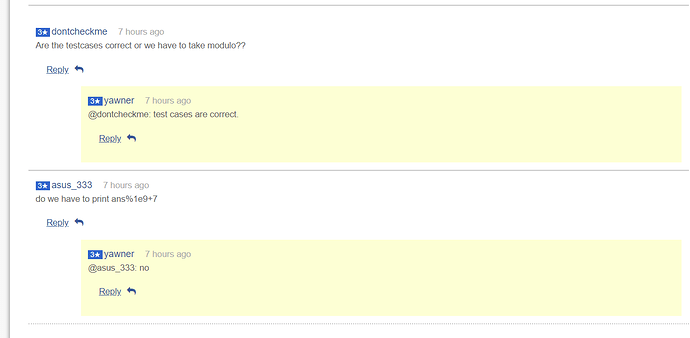Problem link: CodeChef: Practical coding for everyone
Author and Editorialist: saloni_203
DIFFICULTY:
CAKEWALK
PREREQUISITES:
None
PROBLEM:
Sneha is giving her board exam of Science. And her question paper has two parts Part A and Part B, each containing “N” questions. If she has to choose “X” questions from part A and “Y” questions from part B.
Then how many ways can she choose the questions.
Each part should have at least 1 question.
QUICK EXPLANATION:
Key to success : Anyone with good knowledge of combination can do this question very, very easily.
Sneha has to generate the combination of [N, X] and [N, Y].
EXPLANATION:
There are N questions in part A out of which X questions can be chosen in C(N, X) ways. Similarly, Y questions can be chosen from part B containing N questions in C(N, Y) ways.
So. the total number of ways of selecting x questions from part A and y questions from part B is C(N, X) * C(N, Y).
SOLUTION:
Editorialist's Solution
#include<bits/stdc++.h>
using namespace std;
int fact(int);
int main()
{
int T;
cin>>T;
while(T–)
{
int n,x,y;
cin>>n>>x>>y;
if(n>=1 && x>0 && x<n && y>0 && y<n)
{
long long int w = (fact(n)/(fact(n-x)*fact(x))) * (fact(n)/(fact(n-y)*fact(y)));
cout<<w<<endl;
}
}
}
int fact(int l)
{
int i,f=1;
for(i=1;i<=l;i++)
{
f=f * i;
}
return f;
}
